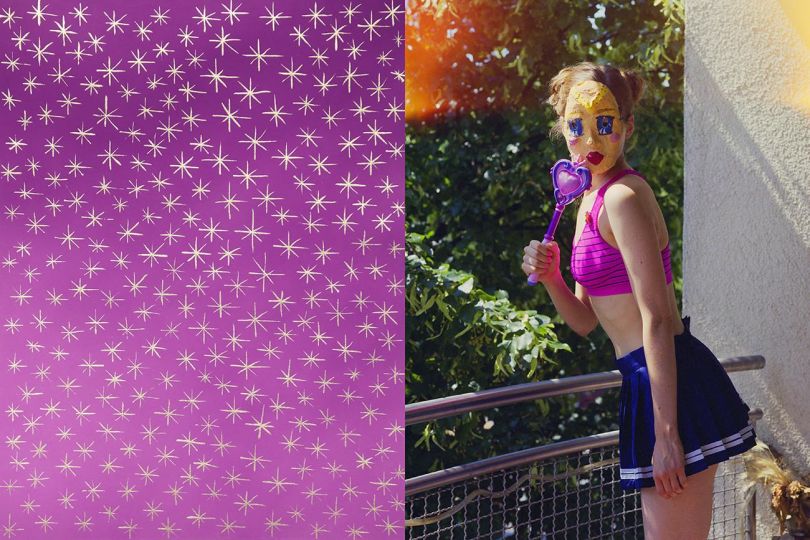Photography records what we forget, offering a map back into the past into lives we would never otherwise know, if not for the camera to record their existence. We are all anonymous, until we are not. We keep records to prevent the inevitable erasure as time slips through our grasp. We are fortunate not only that the photographer was there to record what was, but that historians exist today to dig through the rubble of time and unearth the forgotten.
Nostalgia: The Russian Empire of Czar Nicholas II, Captured in Color Photographs by Sergei Mikhailovich Prokudin-Gorskii (Die Gestalten Verlag) takes us back to the turn of the twentieth century, during the final years before the final days of an empire that spanned several centuries. Prokudin-Gorskii was a pioneer of photography in Russia, and a pioneer in color photography itself. As Dr. Stelle Blasche writes in the book’s introduction, “Very little has been written about his life history. Like so many of the artists and architects of pre-revolutionary Russia, he has been forgotten, leaving a blank space in photography that remains to this day.”
With the publication of Nostalgia, we are treated to a long-overdue retrospective of the artist’s work, a story of so many lives that would be changed forever in a matter of a decade’s time. Prokudin-Gorskii studied chemistry in Russia before traveling to Berlin and Paris to learn about chemistry, photomechanics, and spectral analysis. He returned to Russia in 1901 to study color photography in a country where the medium of photography itself was little known. Driven to compete with the developments in Western Europe and the USA, Prokudin-Gorskii presented his work to the Imperial Technical Society with the aim of garnering financial support for his project. By 1908, he had reached Czar Nicholas II, presenting color projections of photographs that included a portrait of celebrated author Lev Tolstoi.
With the support of the Czar, Prokudin-Gorskii embarked on his first journey in the summer of 1909, documenting the course of the Marinsky canal and it is here that Nostalgia takes us on a long and winding journey through this last days of the Russian empire. The reproductions are large, luscious, and rich, offering us the dual pleasure of considering the relationship between the history of photography and the history of Russia itself. Prokudin-Gorskii shows us a kind of Eden, presented through these magical and mystical images that provide a missing chapter into our collective world.
As a beautiful counterpoint, Philipp Blom and Veronica Buckley deliver Twilight of the Romanovs: A Photographic Odyssey Across Imperial Russia (Thames & Hudson). Here the authors set the ambitious task of showing us a kaleidoscopic look at the Tsarist state. Organized by region, we are given a broad and sweeping tour of the landscape as it was lived by all. From the formal glamour and impending doom of the Royal family to the stark and striking conditions of the countryside, from the broad arrays of ethnicities who populate the land, the authors exquisitely situate the complexities of the country with quotes by the great Russian novelists including Tolstoy, Chekov and Gogol.
As Vladimir Nabokov notes, “The old and the new, the liberal touch and the patriarchal one, fatal poverty and fatalistic wealth got fantastically interwoven in that strange first decade of our century.” It is through the photograph, annotated with detailed captions, that we learn the intricacies and intimacies of this world. The work, now over one hundred years old, takes us back to a time when both photography and world history were on the cusp of revolution. Featuring photographs by Scottish photographer William Carrick, Americans George Kennan and Murray Howe, the German-Russian Carl Bulla, Sergei Prokudin-Gorsky, and writers Leonid Andreyev and Anton Chekov, we witness the rich tapestry of Russian experience.
The final book in the triumvirate of books on Russia during the Tsarist state is Bilder Eines Reiches by Boris Groys and Peter Weibel (Kehrer Verlag), which is a treasure trove of photographs taken in the second half of the nineteenth-century, and though its extensive texts are in Russian and German, there is something compelling about considering the work without linguistic background information. Here we are left to rely exclusively on the quality of the image, of the printing, of the editing and sequencing, of a book with four hundred pages given to the earliest use of photograph in Russia.
There is an exquisite series of portraits that were colorized, showing us the people in their finest dress, a fascinating mixture of East and West. We see turbans, gowns, long coats, headwraps, furs and finery of the people who live in a kind of simplicity that is authentic to a way of life that continued for centuries on end, these photographs showing us how it was lived just before it was forever eclipsed.
With a wide array of photographic sources we see the people of Russia as they saw themselves. The early portraits, the formality of the image contrasted with the peasants who stand before the camera in an unguarded moment. We see the landscape of a continent, and its industry, verging on a massive transformation no one could have ever foreseen. We witness in silence a way of life that is at once foreign and familiar, an intrinsic, instinctual connection with the land itself. There is a quiet simplicity and a timeless beauty to these portfolios, a feeling of the camera’s presence and its ability to capture the eternity of the fleeting moment.
History is written by the victors—and then it is rewritten. These three books offer an exquisite and exciting look into a country that hold a mystery that few in the West consider. The scope and power of the Russian world is something we may consider as we peruse these poignant collections of a disappearing world.
Miss Rosen
















